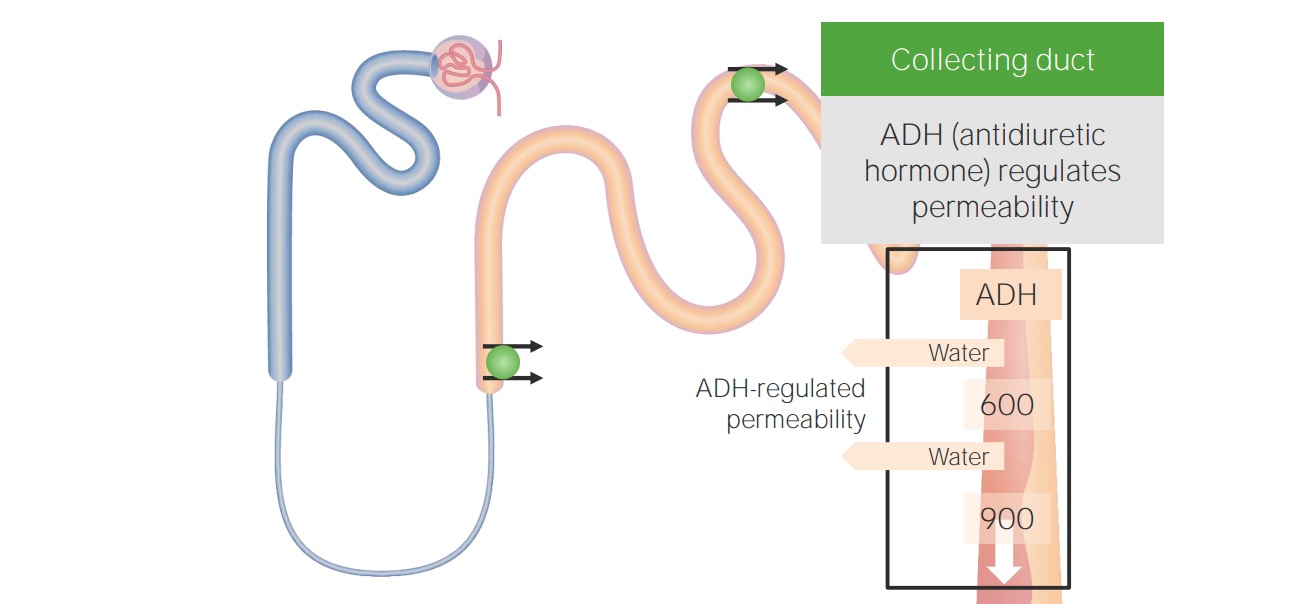Playlist
Show Playlist
Hide Playlist
Renal Case: 81-year-old Man with Depression
-
Slides Water Balance Hypo and Hypernatremia.pdf
-
Reference List Nephrology.pdf
-
Download Lecture Overview
00:01 Okay, let's go through a clinical case to test our knowledge. 00:06 We have an 81-year-old gentleman weighing 60 kilograms with a history of dementia who was admitted to the hospital with worsening delirium. 00:13 So, that means he's got altered mentation. 00:15 And he was previously residing in a skilled nursing facility. 00:19 He was initially admitted the skilled nursing facility for physical rehabilitation following a hospitalization for pneumonia. 00:25 His exam is significant for a blood pressure of 90/66. 00:29 His pulse rate is 98 beats per minute, and he's got tenting of the skin, dry mucous membranes, and an undetectable jugular venous pressure. 00:38 His serum sodium is 155 mEq/L and his urine osmolality is 660 mOsmol/kg. 00:45 He is noted to have only 620 mL of urine output over the past 24 hours. 00:52 So which statement is true regarding this gentleman's hypernatremia? Letter A. 00:58 There is resistance to ADH at the collecting tubule. 01:00 Letter B. 01:01 There's insufficient release of ADH from the posterior pituitary. 01:06 Letter C. 01:07 There is insufficient access to free water and reduced thirst sensation. 01:11 Or letter D, there is hypertonic sodium gain from the diet he is received at the skilled nursing facility. 01:21 Let's go through our clinical case and see if we can arrive at the correct answer. 01:26 Step one, we want to determine the volume status. 01:29 The patient has hypovolemic hypernatremia. 01:31 He's hypotensive and has flat neck veins on physical exam. 01:36 Step two, we want to determine if the ADH is either present or absence. 01:40 In this case, his urine Osm is greater than a serum Osm. 01:43 Therefore, ADH is present and working. 01:48 So let's go through our statements again. 01:51 There is resistance to ADH at the collecting tubule. 01:55 Incorrect. 01:56 The Urine Osm is 600 mOsmol/kg. 01:59 That means, ADH is present. 02:03 Letter B. 02:04 There is insufficient release of ADH from the posterior pituitary. 02:08 Same as in letter A, Urine Osm is 600 mOsmol/kg. 02:13 It's greater than the serum osmolality. 02:16 ADH is present in this case. 02:19 Let's skip letter C for right now and go to letter D. 02:22 There is hypertonic sodium gain from the diet that he has received at the skilled nursing facility. 02:28 Incorrect. 02:29 This is rarely a cause of hypernatremia and if it is, it's typically associated with hypertonic saline solutions, irrigant solutions. 02:37 Were surreptitious poisoning or 'salting' customs, not the case in this gentleman. 02:43 Let's go back to letter C. 02:45 There is insufficient access to free water and reduced to thirst sensation. 02:50 This is correct. 02:51 ADH is appropriate based on his Urine Osm, but the patient likely does not have free access to water in the skilled nursing facility. 02:59 And given his advanced to age and dementia, he may have hypodipsia or reduced thirst. 03:07 Alright, excellent job at assimilating the information and arriving at the correct diagnosis. 03:13 Patients with hypo and hypernatremia are probably some of the most challenging patients that you're going to care for. 03:19 But with a good conceptual understanding and practice, you will be able to solve any problem and water balance that comes your way. 03:27 And with that, we conclude our lecture.
About the Lecture
The lecture Renal Case: 81-year-old Man with Depression by Amy Sussman, MD is from the course Water Balance: Hypo- and Hypernatremia.
Included Quiz Questions
Which of the following is a specific indicator of ADH secretion and function?
- Urine osmolality
- Jugular venous pressure
- Blood pressure
- Serum potassium level
- Serum pH
Although rare, hypernatremia resulting from excessive hypertonic sodium intake should raise suspicion of...?
- ...surreptitious poisoning.
- ...thirst dysregulation.
- ...inherited V2 mutation.
- ...congenital adrenal hyperplasia.
Customer reviews
5,0 of 5 stars
| 5 Stars |
|
5 |
| 4 Stars |
|
0 |
| 3 Stars |
|
0 |
| 2 Stars |
|
0 |
| 1 Star |
|
0 |





